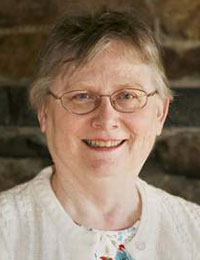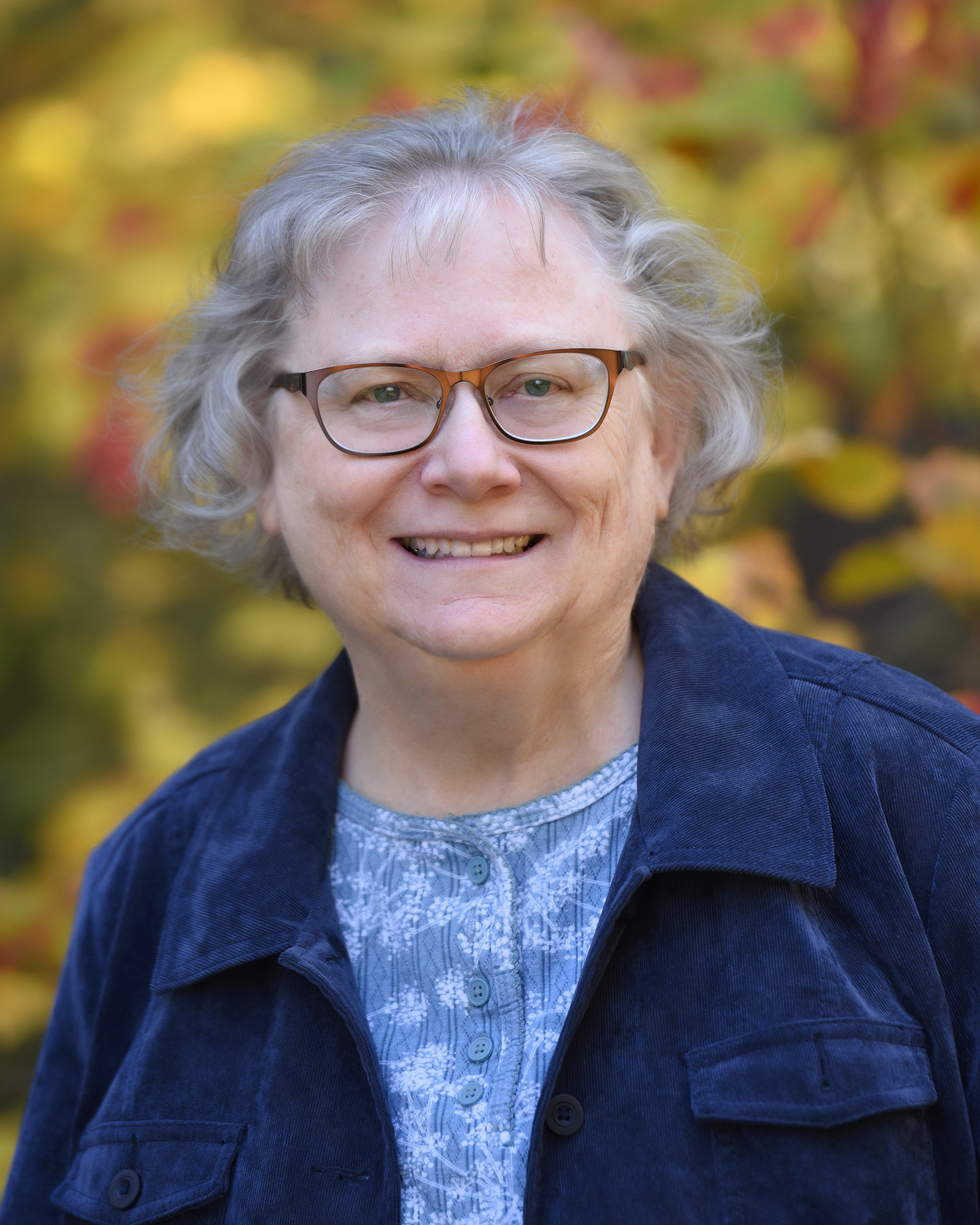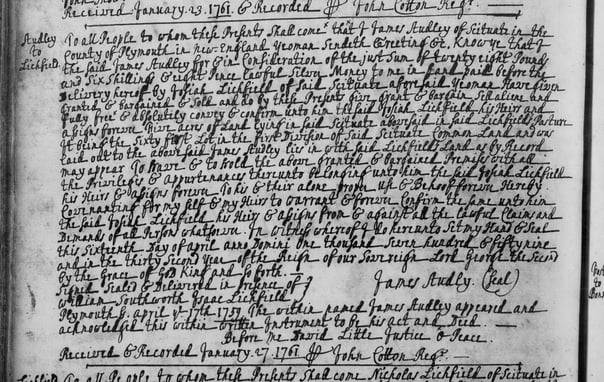 Continuing with the parts of a deed from my last post:
Continuing with the parts of a deed from my last post:
Warranty: “…to warrant & forever confirm the same unto him the said Josiah Lichfield his heirs & assigns from & against all the lawful claims and demands of all persons whatsoever.” (Types of deeds will be discussed in Part 3.)
Date deed was executed (signed by the grantor): “…hereunto Set my Hand & Seal this sixteenth day of April anno domini One thousand Seven hundred & fifty nine and in the thirty second year of the reign of our sovereign Lord George the Second by the Grace of God King and so forth.” The date could also be written in numerals, but not usually in numerals only. This is the same as when you write a check and spell out the amount on one line and write the numbers on another one. The intent here being that there should be no misunderstanding about the date.
Grantor’s signature/seal: “James Studly (seal).” This indicates that James signed his signature and affixed his personal seal to the document. If he could not sign, someone, probably the one who wrote the deed, would write his name with a space for him to make his “mark.” When copied, an imitation of the mark would be included.
Witnesses’ signatures: “Signed sealed & delivered in presence of William Southworth, Isaac Lichfield.” If the grantor died before he acknowledged the deed (see below), at least one witness would testify he had seen the grantor sign. In rare instances where both witnesses had also died, someone familiar with the grantor’s handwriting might testify.
Acknowledgment by grantor: “Plymouth April ye 17th1759 The within named James Studley appeared and acknowledged this within written instrument to be his act and deed – before me David Little Justice of Peace.” The deed was executed on April 16, then the next day brought to a JP to certify that James had signed of his own free will. If his wife had released her dower thirds, her acknowledgment that this was her free will would have also been recorded. The absence of a wife’s release of dower does not mean there was no wife nor that she had refused to release her dower, since at that point the wife did not have any ownership in the property (her dower rights only kicked in when the husband died). It did leave an opening for the deed to be contested in the future and occasionally you will find much later deeds by the widow releasing her dower to clear the title for some reason. In cases where the wife did own part of the property, say something she had inherited, she would be a co-grantee with her husband.
Date received and recorded by the Registrar of Deeds: “Received & recorded January 27, 1761, John Cotton, Regr.” Although executed and acknowledged in 1759, the deed did not find its way into the books for about two years. Such a delay is not unusual as it took some effort to ride or sail from Scituate down to the county seat in Plymouth, and this task would probably be saved for a time when there was enough other business to make the trip worthwhile. Multiple deeds executed at different times might all be recorded at the same time. Recording could also be done many decades later, which makes it a very good idea to always note the dates of acknowledgment and of recording along with the date of execution when you are abstracting. When you find a deed recorded many years after the fact, look for a new deed on or near that date in which the land was sold again.
Continued here.
Share this:

About Alicia Crane Williams
Alicia Crane Williams, FASG, Lead Genealogist of Early Families of New England Study Project, has compiled and edited numerous important genealogical publications including The Mayflower Descendant and the Alden Family “Silver Book” Five Generations project of the Mayflower Society. Most recently, she is the author of the 2017 edition of The Babson Genealogy, 1606-2017, Descendants of Thomas and Isabel Babson who first arrived in Salem, Massachusetts, in 1637. Alicia has served as Historian of the Massachusetts Society of Mayflower Descendants, Assistant Historian General at the General Society of Mayflower Descendants, and as Genealogist of the Alden Kindred of America. She earned a bachelor’s degree from the University of Connecticut and a master’s degree in History from Northeastern University.View all posts by Alicia Crane Williams →
